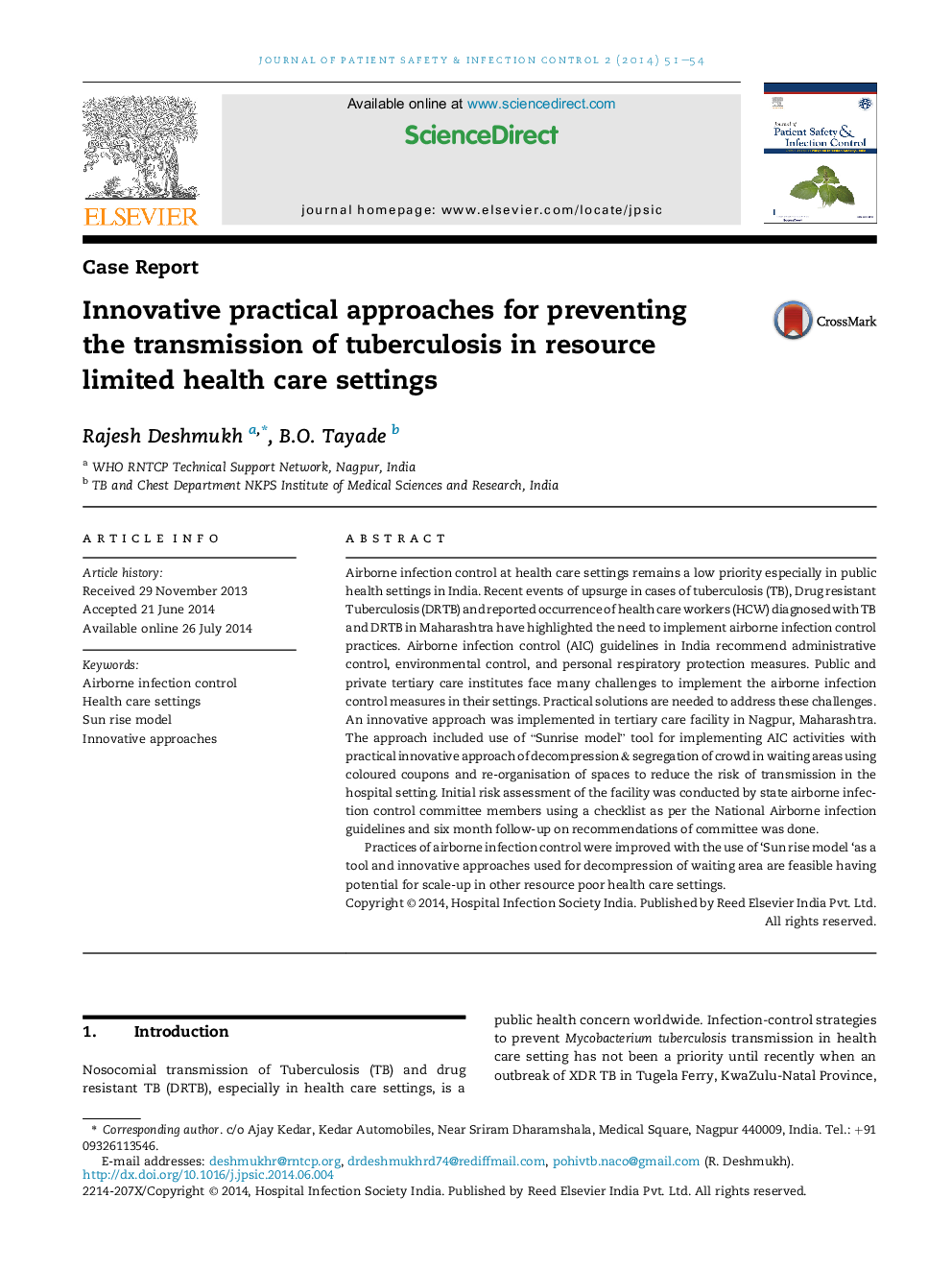| Article ID | Journal | Published Year | Pages | File Type |
|---|---|---|---|---|
| 3406555 | Journal of Patient Safety & Infection Control | 2014 | 4 Pages |
Airborne infection control at health care settings remains a low priority especially in public health settings in India. Recent events of upsurge in cases of tuberculosis (TB), Drug resistant Tuberculosis (DRTB) and reported occurrence of health care workers (HCW) diagnosed with TB and DRTB in Maharashtra have highlighted the need to implement airborne infection control practices. Airborne infection control (AIC) guidelines in India recommend administrative control, environmental control, and personal respiratory protection measures. Public and private tertiary care institutes face many challenges to implement the airborne infection control measures in their settings. Practical solutions are needed to address these challenges. An innovative approach was implemented in tertiary care facility in Nagpur, Maharashtra. The approach included use of “Sunrise model” tool for implementing AIC activities with practical innovative approach of decompression & segregation of crowd in waiting areas using coloured coupons and re-organisation of spaces to reduce the risk of transmission in the hospital setting. Initial risk assessment of the facility was conducted by state airborne infection control committee members using a checklist as per the National Airborne infection guidelines and six month follow-up on recommendations of committee was done.Practices of airborne infection control were improved with the use of ‘Sun rise model ‘as a tool and innovative approaches used for decompression of waiting area are feasible having potential for scale-up in other resource poor health care settings.
